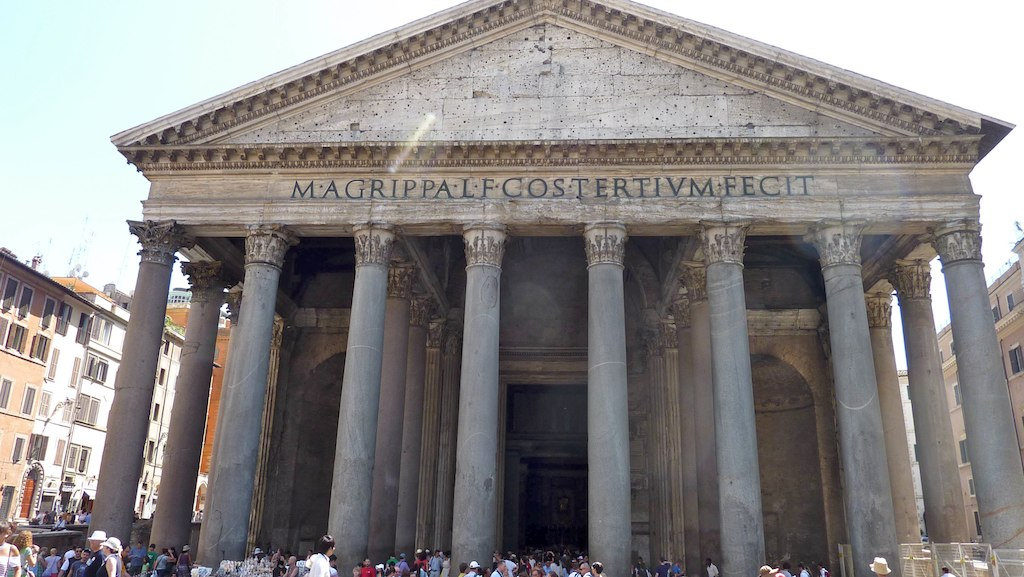Today, October 23rd, is the birthday of the Roman statesman and military general Marcus Vipsanius Agrippa. You might be thinking, yes, of course, who didn’t know that. You might also be thinking, has it come to this and are we to celebrate the birthdays of all minor Roman public servants. There is, however, good reason for celebrating Agrippa and if your EF tour takes you to Rome then there is a very good chance you will see part of his name in rather large letters. I will give you a clue – M•AGRIPPA•L•F•COS•TERTIVM•FECIT. Take a moment….yep, that’s it, across the front of the Pantheon is where you will find this inscription. The full inscription should read, Marcus Agrippa Lucii filius con sul tertium fecit (Marcus Agrippa, son of Lucius, made this building when consul for the third time).
Aside from being a most successful military man, Agrippa was responsible for overseeing many of the major public works that took place in Rome in the 3rd decade BC, the construction of baths, restoration of aqueducts and laying out of public gardens were all down to him. However, the construction of the Pantheon is what he is best remembered for and this was built as a memorial to the Battle of Actium a vital military success where the Emperor Octavian defeated Cleopatra and Marc Antony.
Agrippa built and dedicated the building that served as the Roman Pantheon before its destruction in 80AD. Subsequently, some 45 years later, the Emperor Hadrian used Agrippa’s design to build his own Pantheon; this is the one which survives in Rome today. By way of tribute Hadrian kept the original inscription above the facade. The pantheon was a building dedicated to all of the gods of Rome. It is a most amazing construction; the rounded walls lead the eye upwards to the rotunda which is where the images of the gods would have been. Another reason the eye is drawn this way is that the opening in the ceiling (the oculus) is the only place, other than the door, through which light can penetrate and it acts as a reverse sun dial as the sun moves though the day. This final point adds to the theory that Hadrian built his Pantheon at a 180 degree rotation to the original by Agrippa.
In front of the Pantheon are two rows of Corinthian columns, eight in each. Made of granite these single pieces would have been quarried in Egypt and transported by sledges to barges which carried them to Rome. The facade would have been adorned with bronze and marble but this has all been lost in the centuries shortly after the fall of Rome, you will be able to see the marks in the building where the slabs were wrenched away. In addition, there would have been steps leading up to the pantheon but the reconstruction of Rome over several different levels means that these too have disappeared. The Pantheon stood as testament to the genius of Roman engineering and building practices. The measurements were carefully calculated and concrete was used to construct the rotunda. Sand was used as scaffold and a drainage system employed to move along rainwater that fell through the oculus.
Today the pantheon is a marvelous building to just stand and admire. Inside you will find the tomb of the painter Raphael along with two kings of Italy: Vittorio Emanuele II and Umberto I (as well as his Queen, Margherita). There are many modifications made by the church in terms of decoration but the essence of the building, a major Roman project, still stands out clearly. Consider it a must see.
What is your favorite part of the Pantheon?
(Editor’s note: Add Paul on Google+ If you have a question about for EF Tour Director Paul Mattesini, or an idea for a blog post topic, you can email Paul here, and he will answer readers’ questions in future blog posts.)
Related articles

